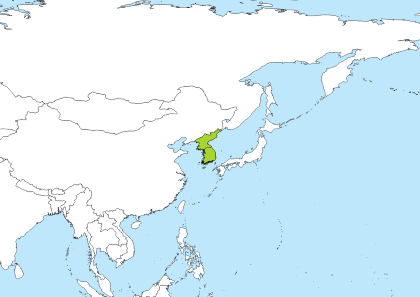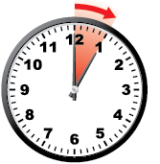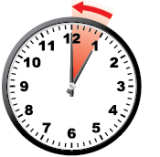KST to CDT Caribbean
Time Difference
Korea Standard Time is 13 hours ahead of Cuba Daylight Time
4:30 am04:30 in KST is 3:30 pm15:30 in CDT
KST to CDT call time
Best time for a conference call or a meeting is between 7:30pm-9:30pm in KST which corresponds to 6:30am-8:30am in CDT
4:30 am04:30 Korea Standard Time (KST). Offset UTC +9:00 hours
3:30 pm15:30 Cuba Daylight Time (CDT). Offset UTC -4:00 hours
4:30 am04:30 KST / 3:30 pm15:30 CDT
| KST | CDT |
|---|---|
| 12am (midnight) | 11am |
| 1am | 12pm (noon) |
| 2am | 1pm |
| 3am | 2pm |
| 4am | 3pm |
| 5am | 4pm |
| 6am | 5pm |
| 7am | 6pm |
| 8am | 7pm |
| 9am | 8pm |
| 10am | 9pm |
| 11am | 10pm |
| 12pm (noon) | 11pm |
| 1pm | 12am (midnight) |
| 2pm | 1am |
| 3pm | 2am |
| 4pm | 3am |
| 5pm | 4am |
| 6pm | 5am |
| 7pm | 6am |
| 8pm | 7am |
| 9pm | 8am |
| 10pm | 9am |
| 11pm | 10am |
| 0:00 | 11:00 |
| 1:00 | 12:00 |
| 2:00 | 13:00 |
| 3:00 | 14:00 |
| 4:00 | 15:00 |
| 5:00 | 16:00 |
| 6:00 | 17:00 |
| 7:00 | 18:00 |
| 8:00 | 19:00 |
| 9:00 | 20:00 |
| 10:00 | 21:00 |
| 11:00 | 22:00 |
| 12:00 | 23:00 |
| 13:00 | 0:00 |
| 14:00 | 1:00 |
| 15:00 | 2:00 |
| 16:00 | 3:00 |
| 17:00 | 4:00 |
| 18:00 | 5:00 |
| 19:00 | 6:00 |
| 20:00 | 7:00 |
| 21:00 | 8:00 |
| 22:00 | 9:00 |
| 23:00 | 10:00 |
Korea Standard Time
Offset: KST is 9 hours ahead Greenwich Mean Time (GMT) and is used in Asia
Countries: It is used in following countries: Korea (North), Korea (South)
Principal Cities: The largest city in the KST timezone is Seoul from South Korea with population about 10.349 million people. Other major cities in the area are Busan, Pyongyang, Incheon, Daegu
Daylight Saving: Korea Standard Time (KST) is not adjusted for daylight saving therefore KST remains the same through out the year. This means, unlike some time zones where the clock is set forward by one hour every summer and backward by one hour during winter to adjust for daylight saving, Korea Standard Time remains the same

KST representations, usage and related time zones
- +09 - basic short
- +0900 - basic
- +09:00 - extended
- +0900 - sign character (+) followed by a four digit time providing hours (09) and minutes (00) of the offset. Indicates nine hour and zero minutes time differences to the east of the zero meridian.
- India - Military abbreviation for KST
- I - short form of 'India'
- Asia/Pyongyang
- Asia/Seoul
- ROK
- Korea Standard Time - UTC +9
- Pyongyang Time - UTC +8:30
- Krasnoyarsk Standard Time - UTC +6
- AWDT - Australian Western Daylight Time
- CHOST - Choibalsan Summer Time
- I - India Time Zone
- IRKST - Irkutsk Summer Time
- JST - Japan Standard Time
- KST - Korea Standard Time
- PWT - Palau Time
- TLT - East Timor Time
- ULAST - Ulaanbaatar Summer Time
- WIT - Eastern Indonesian Time
- YAKT - Yakutsk Time
Cuba Daylight Time
Offset: CDT is 4 hours behind Greenwich Mean Time (GMT) and is used in Caribbean
Countries: It is used in following countries: Cuba
Principal Cities: The largest city in the CDT timezone is Havana from Cuba with population about 2.164 million people. Other major cities in the area are Santiago de Cuba, Camaguey, Holguin, Guantanamo
Daylight Saving: Cuba Daylight Time (CDT) is a daylight saving/summer timezone, however during winter some places switch clocks for one hour back and observe Cuba Standard Time (CST).
 Start: Cuba Daylight Time (CDT) started on Sunday, March 9, 2025 at 12:00 am local time and clocks were set one hour forward to Sunday, March 9, 2025, 1:00 am. Daylight saving starts annually the on second Sunday of March
Start: Cuba Daylight Time (CDT) started on Sunday, March 9, 2025 at 12:00 am local time and clocks were set one hour forward to Sunday, March 9, 2025, 1:00 am. Daylight saving starts annually the on second Sunday of March
 End: Cuba Daylight Time (CDT) ends on Sunday, November 2, 2025 at 1:00 am local time and clocks are set one hour back to Sunday, November 2, 2025, 12:00 am local standard time instead. Daylight saving ends annually the on first Sunday of November
End: Cuba Daylight Time (CDT) ends on Sunday, November 2, 2025 at 1:00 am local time and clocks are set one hour back to Sunday, November 2, 2025, 12:00 am local standard time instead. Daylight saving ends annually the on first Sunday of November
CDT representations, usage and related time zones
- -04 - basic short
- -0400 - basic
- -04:00 - extended
- -0400 - sign character (-) followed by a four digit time providing hours (04) and minutes (00) of the offset. Indicates four hour and zero minutes time differences to the west of the zero meridian.
- Quebec - Military abbreviation for CDT
- Q - short form of 'Quebec'
- America/Havana
- Cuba
- Central Daylight Time - UTC -5
- Cuba Daylight Time - UTC -4
- AST - Atlantic Standard Time
- EDT - Eastern Daylight Time
- AMT - Amazon Time
- BOT - Bolivia Time
- CDT - Cuba Daylight Time
- CLT - Chile Standard Time
- FKT - Falkland Island Time
- GYT - Guyana Time
- HLV - Hora Legal de Venezuela
- PYT - Paraguay Time
- Q - Quebec Time Zone
- VET - Venezuelan Standard Time
